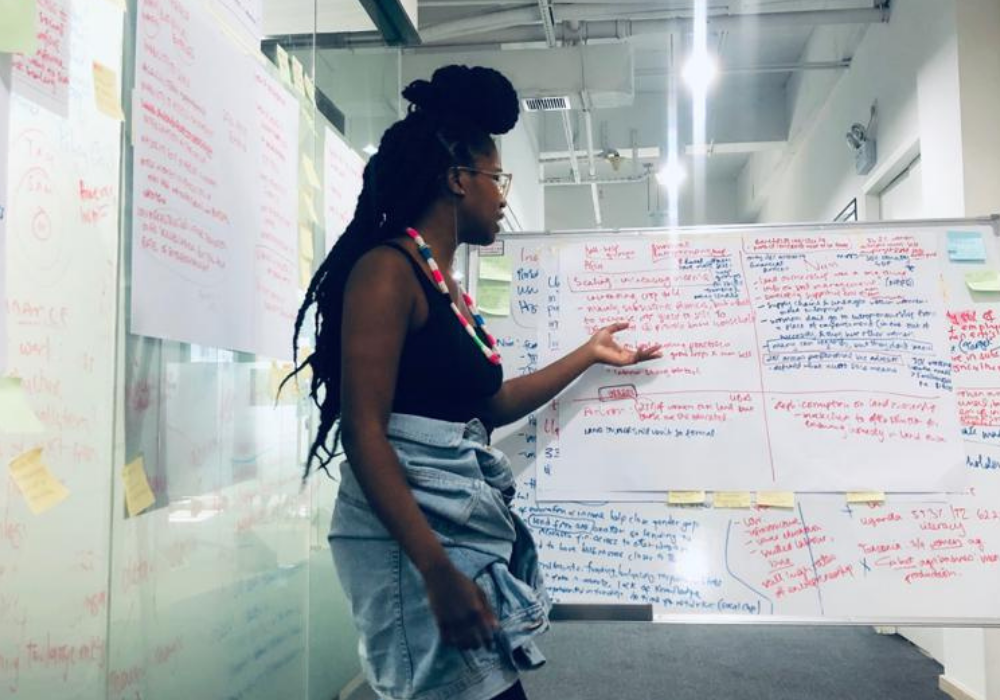In almost every conversation about mission-aligned businesses, one name regularly tops the conversation: Patagonia. The company is a true embodiment of its central mission, which Founder Yvon Chouinard summarises as: “to save our home planet”.
In addition to the mission, the strongest feature that the company stands out for is their transparency. Consistently appearing in the top 20 (out of 250 brands) in the Transparency Index, it is clear that Patagonia’s biggest edge in the industry is its robust measurement system, which allows them to track every movement, reflect on how closely it lines up with their mission, and assert next steps accordingly.
I met Pumla Maswanganyi at the UNLEASH UNSDGs Innovation Lab in China, and was then introduced to her business partner Thaksheel Nirvaan Alleck, and was thrilled to be able to engage them in creating an impact strategy for Tomorrow’s Air, with the generous support of Ann Becker, a longtime adventure industry leader, and Tomorrow’s Air member. In this interview, Pumla and Thaksheel share their approach to creating a Foundational Impact Strategy for Tomorrow’s Air with ideas and tips any business can apply.

Nim: Your backgrounds are in Development, Business, and Systems Practice. Can you start off by sharing a little bit about why you think designing a Foundational Impact Strategy like this is necessary?

Pumla: As consultants and system builders focused on aligning business and impact, we’ve seen the benefits of creating strategies to monitor and evaluate results related to the environment and consumer behaviors. Thaksheel and I have worked with organisations ranging from large International Non-Governmental Organisations to emerging social enterprises, for whom Monitoring and Evaluation (particularly on the impact front) has gone under-documented for years. What we have continuously observed is that the lack of adequate structures and measurement systems almost always results in a disconnect between professed values and actual outcomes.

Thaksheel: Yes, precisely. Even organizations doing so much good in the world can fail to adequately capture it, missing out on opportunities because of it. Adding to the evergreen value of impact and business alignment is the fact that today’s consumers view companies and organisations as participants in a larger movement, and every individual purchase as a token of support for the company at large.
Readers of this article might have seen studies showing that over 41% of consumers seek product products and services that are aligned with their values, and additionally, 73% of consumers are willing to change their spending habits, in favour of more sustainable options.
While it may seem counter-intuitive, organizations with impact central to their mission (from combating climate change, to alleviating poverty), are not exempt from falling into the pitfall caused by the absence of measurement structures.
Pumla: In summation, organizations of all types need a compass to not only guide them in being mission-aligned, but also help them present their impact to funders, board members, supporters, and other stakeholders. While this need is widely acknowledged, it can be challenging to dedicate time and resources to make sure that mission and operations remain in sync.
Nim: I’m with you! So tell us how you’re approaching the Foundational Impact Strategy for Tomorrow’s Air, and what aspects of this process other businesses could follow?
Pumla: As an upcoming leader in helping bring about a carbon-free travel future, Tomorrow's Air is on a mission to unite brands and travelers to decarbonize the travel ecosystem, fast. Given this ambitious goal, having an impact strategy is very important. We’re helping the Tomorrow’s Air team create their first Foundational Impact Strategy (FIS) that will quantify, track, and evaluate impact on the environment, consumers, and other stakeholders.
The Foundational Impact Strategy will anchor overall Monitoring and Evaluation in line with impact and organizational success metrics; help build brand loyalty, and mitigate risk overall by establishing ethical boundaries.
Thaksheel: I can share some highlights from our approach to the Foundational Impact Strategy that other companies can mimic:
- Consider the Foundational Impact Strategy as a living entity. While the core elements of the Strategy remain static, by design, the impact strategy is meant to evolve with the organization. One could be held back from seeing this strategy’s potential through, fully, if they take the mindset that this has to be perfect in its first iteration.
In order to build the strategy for Tomorrow’s Air, we started with two generic questions, and they provide an example of how we are framing the Strategy from a wider vantage point that considers the business in relation to the larger ecosystem.
- Who is the core customer, and how does the business address their primary need?
- What would signal to the business that it was achieving its social and environmental impact goals?
For Tomorrow’s Air, the specific questions became:
- What constitutes a climate-conscious traveler, and how can Tomorrow’s Air foster climate consciousness in travel?
- How can Tomorrow’s Air build a society where carbon impacts are automatically addressed in the product?
- What might Tomorrow’s Air contribute to shape the future of the emerging climate tech vertical?
Pumla: Absolutely. As Nim and I know well from our time together in China, another central aspect of the Strategy is the United Nations Sustainable Development Goals (SDGs). The SDG Agenda is the world’s only globally recognised impact framework, acknowledged by 195 countries around the world. The framework captures what 99 percent of the world’s countries believe to be the definition of a sustainable impact, by asserting the challenges worth tackling for a more prosperous future. The SDGs serve as a guiding force for us to frame impact in accordance with relevant SDG indicators and tie Tomorrow’s Air’s work with the larger global climate action mandate and action plan.

Nim: Our goals with Tomorrow’s Air are grand, and the space we’re operating in is complex. How does your team start to untangle the details?
Pumla: To build the Strategy, we start with an audit to understand the current status of operations and identify existing strengths and gaps. After the audit, we explore industry-specific considerations such as looking into other actors and stakeholders within the climate tech industry and navigating pre-existent solutions in the problem space.
This leads to an outline defining how the current activity can be aligned and adjusted in accordance with the long-term vision and projected industry futures. The audit results in a list of questions that can provoke some deep thinking on the part of company leaders, and it’s intended to do that!
The result of our first audit of Tomorrow’s Air was actually a series of diagrams drawn in Miro, linking goals with a range of potential measurable indicators.
Finally, the findings are synthesized, resulting in the Foundational Impact Strategy which Tomorrow’s Air will use as its anchor.
Thaksheel: The academic underpinnings of this are relevant: when it comes to methodology, we are building the Strategy using a refined interdisciplinary approach that merges systems theory, the scientific method, insider development insights, and the SDGs.
We have applied this methodology in several projects of similar magnitudes, for partners including global international non-governmental organizations, large international foundations, and innovation-centered start-ups; all creating impact in areas from poverty alleviation, to health access, to improved sanitation management.
For Tomorrow’s Air, which is still in its youth, this is an optimal time to incorporate the FIS. We are excited to be a part of the Tomorrow’s Air journey, as it lays the foundations to be a leader in restoring our planet, one step (or breath) at a time.
Nim: Us too! Thanks Pumla and Thaksheel!
